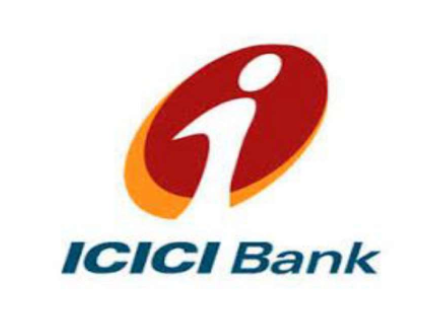 New Delhi, 21st November, 2013 – PayUPaisa is set to clear the diseconomies of CoD payment model and offer a much needed relief to e-commerce merchants in India with the launch of its unique payment option called – ‘Release on Delivery’.
New Delhi, 21st November, 2013 – PayUPaisa is set to clear the diseconomies of CoD payment model and offer a much needed relief to e-commerce merchants in India with the launch of its unique payment option called – ‘Release on Delivery’.
Release on delivery (RoD) is a win-win solution for both online shoppers and merchants. To a buyer it provides the same trust as CoD. While for a merchant, it’s prepaid medium to accept online payments and reduces the expenses done via CoD by almost 4 times.
CoD has become a big problem for e-commerce firms today
Since its introduction, cash on delivery has become a love-hate relationship for any e-commerce merchant. They like it because it constitutes more than 60% of their total transactions but they hate it because the average cost per CoD transaction borne by a merchant is as high as 8% to 10% (as compared to an online transaction which costs 2% to 2.5%). In fact such high CoD charges are eroding the margins of e-commerce firms and pose a serious question on their overdependence on CoD.
The cash on delivery model involves a lot of direct and indirect costs which eventually hits the balance sheet of merchant, big time. For an order delivered via CoD, third party courier companies charge a cash handling fees which varies from Rs 15 to Rs 35 for a delivery of Rs 1000 (so about 1.5% to 3.5%). However, this fee is even more higher in case of returns, where the courier company charges Rs 45 to Rs 200 for forward and reverse logistics (the cost varies depending on the courier company and the whether it is a intra city delivery or intercity).
Around 20% of CoD orders are not honored by the buyer (or returned) and considering such high rates on returns, CoD becomes unbearable for merchants. Moreover roughly 10% of items ordered through CoD are found to be damaged which incurs additional 1.5% to 2% on overall CoD cost. On top of this an additional 0.4% is added to the CoD cost due to inventory getting stuck in transit due to returns. Indirect costs also poke a big hole into a merchant’s pocket as operational costs arise due to verification calls being made and customer care etc. There are also instances of lost money and fake notes. Thus, the longer payment cycle (as CoD is a postpaid medium), higher instances of returns and additional costs calls for all merchants to de risk themselves from CoD.
Do Buyers opt for CoD just because they can’t pay online? Not Really!
It’s often thought Consumers opt for CoD because they can’t pay online. However if that was the case then users would not have swiped their cards when offered that option at time of delivery. Top E-commerce retailers in country who offer card on delivery service (or swiping card at time of delivery) saw 30% value shift to cards. An internal survey done by PayUPaisa revealed that more than 35% of users who do Cash on delivery, can actually pay online! Further, 75% of these users choose to do CoD because of trust factor. They want to see the product before paying. 25% of the users do it because of convenience. It’s easier than entering so many numbers present on the card.
How does Release on Delivery Payment model work?
When a buyer decides to purchase a product on merchant’s website and is redirected to the payments page, he’s shown multiple payment options like credit card, debit card, Netbanking or CoD to choose from. On selecting CoD, RoD payment option is also offered to him. Buyer can select RoD payment method and pay through Credit card, Debit card or Netbanking. In turn, RoD method promises to keep buyer’s money totally safe though various safety check points and PayUPaisa’s strong dispute resolution mechanism.
Safety Checkpoint 1: Buyer’s money is kept safely with PayUPaisa and is not released to the merchant in first go.
Safety Checkpoint 2: When buyer explicitly informs PayUPaisa to release the payments, only then the money is transferred to the merchant. In case if PayUPaisa doesn’t receive any confirmation from the buyer in 3 days after the product delivery, the payments are released to the merchant by default.
What if something goes wrong with the buyer’s placed order?
Inline image 2
Safety Checkpoint 3: In an unlikely case, where a buyer faces a problem with the delivered product, he can raise a quick dispute with PayUPaisa’s dispute resolution team. This team will resolve the dispute in an unbiased way so that the buyer does not face any financial loss. The dispute needs to be resolved in maximum 12 working days and PayUPaisa refunds back the money to the buyer if the dispute is found to be genuine.
Merchant benefits through Release on Delivery Payment Method
· RoD reduces the cost incurred through CoD by almost 4 times! RoD is prepaid mode of payment. i.e. a merchant get paid via credit/debit card or Netbanking instantly. In this case payment gateway charges are applicable to a merchant which is between 2% to 2.5%.
Buyer Benefits through Release on Delivery Payment Method
· Buyer has more control. Buyer gets to release money till after 3 days of receiving the product.
· In case of mismatched expectations, buyers can raise a dispute with PayUPaisa’s dispute resolution team which aims to resolve the dispute amicably between buyer and seller.
· Buyer gets faster refunds. The refunds get debited into buyer’s credit card or bank account within two days.
· Buyer can store card details (using PayU’s store card feature) and do 1-click checkout next time.
PayU India’s Co-founder & CEO, Nitin Gupta said “The largest pet supplier e-commerce merchant in India, Dogspot.com, went live with this and without any promotion, 7% of all CoD transactions shifted to RoD. Large merchants like Tradus, The mobile store etc. are eager to go live on this payment option. We expect that in 9-12 months time, 20% of all CoD transactions will become Release on Delivery transactions.”







